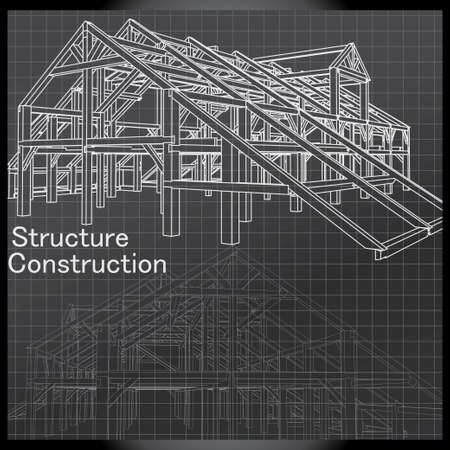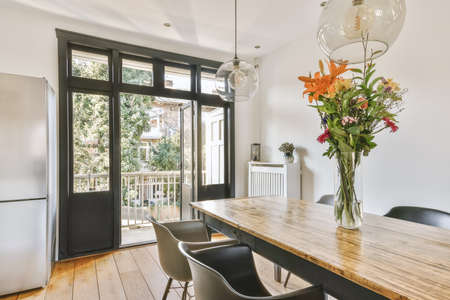Introduction to Natural Light in UK Homes
Natural light is a highly valued asset in UK homes, not only for its ability to enhance the aesthetic appeal of living spaces but also for its positive impact on wellbeing and energy efficiency. With the UKs often overcast climate and shorter daylight hours during winter months, making the most of available sunlight becomes an essential consideration for homeowners. The traditional architecture found throughout the UK, characterised by terraced houses, Victorian semis, and detached properties with relatively small windows, can sometimes limit natural illumination indoors. As extensions—whether single or double storey—become increasingly popular solutions for expanding living space, it is crucial to address how these additions can maximise daylight. Taking into account the unique aspects of British weather patterns and building styles, a thoughtful approach to extension design can dramatically improve the amount of natural light entering a property, transforming dark corners into bright and welcoming areas.
2. Architectural Strategies for Enhancing Light
When planning single or double storey extensions in the UK, both modern and traditional design strategies play a crucial role in maximising natural daylight. The layout and orientation of your extension are fundamental, as they determine how effectively sunlight can permeate living spaces throughout the day. In both contemporary and period properties, architects now often blend classic British sensibilities with innovative solutions to create light-filled, welcoming environments.
Modern Design Approaches
Modern extensions frequently utilise open-plan layouts and flexible partitions to allow light to travel freely between rooms. Features such as floor-to-ceiling glazing, sliding or bi-fold doors, and minimal internal walls help dissolve boundaries between indoors and outdoors. Orientation is key: south-facing extensions receive the most sunlight, while east- or west-facing designs can be tailored for morning or afternoon light respectively.
Traditional Approaches with a Modern Twist
In period homes, respecting original features while introducing more daylight can be achieved through sympathetic updates. Traditional sash windows may be enlarged or paired with rooflights, and conservatories or orangeries styled in keeping with Victorian or Edwardian character offer timeless ways to bring in natural light without sacrificing heritage appeal.
Key Considerations: Layout & Orientation
| Design Approach | Layout | Orientation Strategy |
|---|---|---|
| Modern | Open-plan, minimal partitions | Maximise south-facing glazing; consider solar gain management |
| Traditional | Zoned rooms, feature windows/rooflights | Sensitive placement of new openings to match existing style; use garden aspects where possible |
Practical Tips for UK Homes
– Position primary living spaces (kitchens, lounges) along the sunniest sides of the extension
– Use reflective surfaces and lighter colours for walls and ceilings to enhance brightness
– Incorporate high-level windows, clerestory lights, or glazed gables in double storey designs
– For terraced homes, consider side-return extensions with roof glazing to brighten deep interiors

3. Choosing the Right Windows and Glazing
Selecting the most suitable windows and glazing options is crucial when aiming to maximise natural light in both single and double storey extensions across the UK. The right choices not only brighten your living spaces but also contribute significantly to energy efficiency, comfort, and even property value.
Understanding Window Styles for Extensions
The UK market offers a variety of window styles, each with its own benefits. For maximising daylight, consider floor-to-ceiling windows or bi-fold doors for ground floor extensions, which create seamless connections between indoors and outdoors. For upper storeys or where privacy is a concern, rooflights, skylights, and dormer windows are excellent solutions. Traditional sash or casement windows remain popular for period properties and can be specified with larger panes for a contemporary twist that lets in more light.
Orientation and Placement Matter
Thoughtful window placement based on orientation will harness sunlight throughout the day. South-facing windows capture the most daylight, while north-facing ones offer softer, consistent illumination without excessive glare. In terraced homes or extensions with limited external walls, consider high-level clerestory windows or corner glazing to draw in extra light from above or adjacent angles.
High-Performance Glazing Solutions
Modern glazing technology has transformed how we use glass in British homes. Double glazing remains a standard for insulation, but triple glazing can provide even greater thermal performance—ideal for reducing heat loss during chilly UK winters. Low-E (low emissivity) coatings further enhance energy efficiency by reflecting heat back into your home while letting visible light pass through. For south-facing extensions prone to overheating, solar control glass helps prevent interiors from becoming uncomfortably warm.
Impact on Energy Efficiency and Comfort
Investing in quality glazing not only increases brightness but also supports year-round comfort and reduced energy bills. By minimising draughts and preventing unwanted heat transfer, well-chosen windows ensure that your extension remains pleasant whatever the season. Always check that new installations meet current UK Building Regulations regarding thermal performance (U-values), as compliance is essential for both legal reasons and long-term savings.
Summary: Balancing Light and Performance
When planning your single or double storey extension, carefully balance the desire for abundant daylight with practical considerations like insulation, ventilation, privacy, and aesthetics. By selecting the right combination of window styles and advanced glazing solutions tailored to your home’s orientation and usage patterns, you’ll enjoy bright spaces that are as comfortable as they are energy efficient—a hallmark of thoughtful British home improvement.
4. Utilising Skylights and Roof Lanterns
Incorporating skylights and roof lanterns is an effective strategy for maximising natural light in both single and double storey extensions across the UK. These features not only enhance the aesthetic appeal of your living space but also have a tangible impact on energy efficiency, well-being, and overall home value.
Benefits of Skylights and Roof Lanterns
Skylights and roof lanterns are designed to bring daylight deep into your extension, illuminating areas that may otherwise remain dark due to limited window access. By increasing sunlight penetration, they create a brighter, more inviting environment while reducing reliance on artificial lighting during the day.
| Feature | Skylights | Roof Lanterns |
|---|---|---|
| Natural Light Intake | Moderate to high (depends on size/placement) | High (especially in larger spaces) |
| Ventilation Options | Can be fixed or opening for ventilation | Mainly fixed, some with venting features |
| Design Impact | Sleek, modern lines; flush with roof | Architectural statement; raised above roofline |
Practical Considerations
When planning to install skylights or roof lanterns in your extension, it’s crucial to consider the orientation of your property. North-facing installations offer consistent but subtle light, while south-facing ones maximise sunlight throughout the day. Additionally, selecting double- or triple-glazed glass ensures excellent thermal performance—essential for the UK climate.
UK Building Regulations Compliance
According to UK building regulations, any new glazing must meet stringent thermal efficiency standards (Part L), ensuring heat loss is minimised. Furthermore, structural integrity (Part A) and ventilation requirements (Part F) must be addressed. For most domestic extensions, installing skylights or roof lanterns falls under permitted development rights; however, if your property is listed or located in a conservation area, you will need to consult your local planning authority before proceeding.
Summary Table: Key Regulatory Points
| Regulation Area | Main Requirement |
|---|---|
| Thermal Efficiency (Part L) | Double/triple glazing required for insulation |
| Structural Support (Part A) | Adequate support for added weight of glazing unit |
| Ventilation (Part F) | Sufficient airflow if skylight/lantern is main source of light/air |
By thoughtfully integrating skylights and roof lanterns into your extension design—and ensuring compliance with UK building regulations—you can transform even the darkest corners into bright, uplifting spaces that add real value to your home.
5. Open Plan Layouts and Interior Finishes
One of the most effective ways to maximise natural light in single and double storey extensions across the UK is by embracing open plan layouts combined with carefully selected interior finishes. Open plan designs eliminate unnecessary walls and partitions, allowing daylight to flow freely throughout your new space. This sense of openness not only creates a brighter environment but also enhances the perception of spaciousness—an asset for many British homes where every inch matters.
The Power of Colour Schemes
Colour plays a pivotal role in reflecting and amplifying natural light. Opting for light, neutral tones such as whites, creams, or soft greys on walls and ceilings can help bounce sunlight deeper into your extension. In contrast, darker shades tend to absorb light, making spaces feel smaller and gloomier—something to be mindful of in the often overcast UK climate.
Reflective Surfaces: Your Secret Weapon
Incorporating reflective materials within your design scheme is another smart strategy. Consider high-gloss kitchen cabinetry, polished worktops, or even metallic fixtures to further distribute natural light. Large mirrors positioned opposite windows or glazed doors can dramatically increase brightness by reflecting daylight back into the room, creating a more inviting atmosphere.
Flooring Choices Matter
The right flooring can make all the difference. Lighter timber finishes or pale tiles with a slight sheen are popular choices that complement the open plan approach while enhancing luminosity. Avoid heavy carpets or dark woods that can dull the overall effect.
Bringing It All Together
By thoughtfully combining an open plan layout, a harmonious colour palette, and reflective surfaces, you’ll create an extension that feels airy and welcoming year-round. These strategies are particularly well-suited to the British context, where maximising every drop of daylight is key to comfortable and stylish living.
6. Overcoming Common UK Challenges
Addressing Overshadowing Issues
Overshadowing is a frequent concern when extending homes in densely populated UK neighbourhoods, especially with double storey extensions. To maximise natural light while respecting neighbouring properties, consider stepped or staggered designs that reduce the impact of shadows. Incorporating rooflights or light wells can also channel daylight into spaces that might otherwise be shaded by adjacent buildings.
Balancing Privacy and Light
Privacy is paramount in the UK’s urban and suburban settings, where houses are often close together. Strategic window placement, such as high-level or frosted glazing, allows for abundant natural light without compromising neighbours’ privacy. Additionally, installing clerestory windows or utilising internal glazed partitions helps to diffuse light throughout the extension while maintaining seclusion.
Navigating Planning Constraints
UK planning regulations are stringent regarding extensions—particularly concerning height, proximity to boundaries, and impacts on neighbours’ daylight. Early engagement with local planning authorities and awareness of ‘right to light’ legislation can prevent costly redesigns. Opt for design solutions like flat roofs with integrated skylights or side-return infill extensions, which often fall within permitted development rights but still enhance natural illumination.
Innovative Solutions for Unique UK Contexts
Given Britain’s unpredictable weather and narrow plots, creative use of glass—such as full-height sliding doors or corner windows—can make a dramatic difference. Light tubes and solar tunnels offer additional options for bringing sunlight into deeper sections of single or double storey additions without breaching privacy or planning rules.
Working with Professionals
Collaborate closely with architects experienced in UK building practices to tailor your extension’s design to site-specific constraints. Their expertise ensures compliance with local requirements while maximising the benefits of natural light in both single and double storey projects.
7. Case Studies and Real-World Examples
Inspirational UK-Based Extension Projects
Examining real-world examples is an excellent way to understand how maximising natural light can transform both single and double storey extensions. Across the UK, homeowners have embraced creative solutions that not only flood their homes with daylight but also enhance liveability and value.
Victorian Terrace Rear Extension, London
This classic single storey rear extension in North London demonstrates how Crittall-style doors and a large roof lantern can make a dramatic difference. The floor-to-ceiling glazing at the rear opens onto a small garden, inviting sunlight deep into the once-dark kitchen. Lesson learned: Combining vertical glazing with overhead features like skylights or lanterns ensures multiple light sources, reducing shadows and creating a brighter, more inviting space.
Double Storey Side Extension, Manchester
A family in Manchester transformed their semi-detached home by adding a double storey side extension featuring corner windows and light wells above the staircase. By incorporating frosted glass panels on the upper level, they maintained privacy while still allowing daylight to filter through. Practical tip: Use opaque or frosted glass for areas requiring privacy without sacrificing brightness.
Cotswolds Barn Conversion
This barn conversion in the Cotswolds showcases how structural elements can be retained while boosting natural light. The designers installed full-height glazed gable ends and strategically placed rooflights along the pitched roof. Timber beams were left exposed, and whitewashed walls amplified the daylight. Lesson learned: Working sympathetically with existing features—like beams or stonework—can enhance character while ensuring spaces feel airy and open.
Key Takeaways from UK Extensions
- Orientation matters: East- or south-facing extensions naturally benefit from longer periods of sunlight; design layouts to make the most of this where possible.
- Glazing variety: Combining different types of glazing (rooflights, bi-fold doors, fixed panels) spreads light more evenly throughout interiors.
- Sensitive integration: Matching new materials and styles with existing architecture ensures extensions feel cohesive while improving natural light flow.
These case studies highlight that, whether you’re extending a modest terrace or converting a historic barn, thoughtful use of glazing, orientation, and finishes can dramatically improve natural light levels in both single and double storey extensions across the UK.


